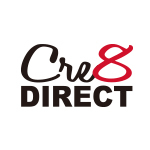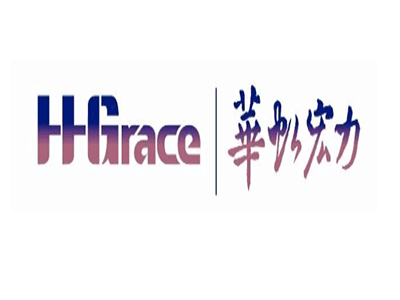INT'L GROUP(000411)
Search documents
英特集团:截至2025年11月28日公司股东户数为22957户
Zheng Quan Ri Bao Wang· 2025-12-03 09:13
证券日报网讯12月3日,英特集团(000411)在互动平台回答投资者提问时表示,截至2025年11月28 日,公司股东户数为22957户。 ...
抗流感概念震荡拉升 英特集团一度涨停
Mei Ri Jing Ji Xin Wen· 2025-12-03 02:33
(文章来源:每日经济新闻) 每经AI快讯,12月3日,抗流感概念盘中震荡拉升,英特集团一度涨停,此前海王生物、益盛药业涨 停,粤万年青涨超10%,广济药业、盘龙药业、金迪克等跟涨。 ...
抗流感概念震荡拉升 英特集团涨停
Xin Lang Cai Jing· 2025-12-03 02:13
抗流感概念盘中震荡拉升,英特集团直线涨停,此前海王生物、益盛药业涨停,粤万年青涨超10%,广 济药业、盘龙药业、金迪克等跟涨。 ...
浙江国企改革板块12月2日跌0.07%,创源股份领跌,主力资金净流出6519.87万元





Sou Hu Cai Jing· 2025-12-02 09:21
Market Overview - On December 2, the Zhejiang state-owned enterprise reform sector fell by 0.07% compared to the previous trading day, with Chuangyuan Co., Ltd. leading the decline [1] - The Shanghai Composite Index closed at 3897.71, down 0.42%, while the Shenzhen Component Index closed at 13056.7, down 0.68% [1] Stock Performance - Yilida (002686) saw a significant increase of 10.00%, closing at 7.37 with a trading volume of 197,100 shares and a transaction value of 142 million [1] - Ningbo Fuda (600724) also performed well, increasing by 9.96% to close at 5.85, with a trading volume of 440,900 shares and a transaction value of 254 million [1] - Other notable gainers included Dehong Co. (603701) up 3.64% and Qianjiang Biochemical (600796) up 2.71% [1] Fund Flow Analysis - The Zhejiang state-owned enterprise reform sector experienced a net outflow of 65.2 million from institutional investors and 79.2 million from speculative funds, while retail investors saw a net inflow of 144 million [2][3] - Ningbo Fuda (600724) had a net inflow of 70.2 million from institutional investors, despite a net outflow of 31.7 million from speculative funds and 38.6 million from retail investors [3] - Yilida (002686) also experienced a net inflow of 62.3 million from institutional investors, with outflows from both speculative and retail investors [3]
英特集团(000411) - 关于2021年限制性股票激励计划预留授予部分第二个解除限售期解除限售股份上市流通的提示性公告
2025-11-27 16:01
| 证券代码:000411 | 证券简称:英特集团 | 公告编号:2025-056 | | --- | --- | --- | | 债券代码:127028 | 债券简称:英特转债 | | 浙江英特集团股份有限公司 关于 2021 年限制性股票激励计划预留授予部分 第二个解除限售期解除限售股份上市流通的提示性公告 本公司及董事会全体成员保证信息披露的内容真实、准确、完整,没有虚假记 载、误导性陈述或重大遗漏。 重要内容提示: 本次符合解除限售条件的激励对象共计 18 名,本次解除限售的限制性股票 数量为 24.12 万股,占公司最新总股本的 0.05%。 本次解除限售的限制性股票的上市流通日期为 2025 年 12 月 3 日。 浙江英特集团股份有限公司(以下简称"公司"或"英特集团")于 2025 年 11 月 21 日召开十届十八次董事会议,审议通过了《关于 2021 年限制性股票激励计 划预留授予部分第二个解除限售期解除限售条件成就的议案》。2021 年限制性股票 激励计划(以下简称"本次激励计划")预留授予部分第二个解除限售期解除限售 条件已成就。根据公司《2021 年限制性股票激励计划(草案)》(以下 ...
医药商业板块盘初回调
Di Yi Cai Jing· 2025-11-27 12:04
Group 1 - Several companies, including Shuyupingmin, Huaren Health, and Kaikai Industry, experienced a decline of over 6% [1] - Other companies such as Yaoyigou, Renmintongtai, Yingtigroup, Diyi Medical, and Yifeng Pharmacy also followed the downward trend [1]
国企改革板块11月26日跌0.4%,久之洋领跌,主力资金净流出83.37亿元





Sou Hu Cai Jing· 2025-11-26 09:37
Market Overview - The state-owned enterprise reform sector declined by 0.4% compared to the previous trading day, with Jiuzhiyang leading the decline [1] - The Shanghai Composite Index closed at 3864.18, down 0.15%, while the Shenzhen Component Index closed at 12907.83, up 1.02% [1] Top Performers in State-Owned Enterprise Reform Sector - Huashu Holdings (000509) closed at 4.03, up 10.11% with a trading volume of 296,500 shares and a turnover of 116 million yuan [1] - Teda Co., Ltd. (000652) closed at 4.59, up 10.07% with a trading volume of 828,800 shares and a turnover of 376 million yuan [1] - Te Fa Information (000070) closed at 13.92, up 10.04% with a trading volume of 2,296,300 shares and a turnover of 3.122 billion yuan [1] - Shanghai Mechanical & Electrical (600835) closed at 33.00, up 10.00% with a trading volume of 537,500 shares and a turnover of 1.703 billion yuan [1] Underperformers in State-Owned Enterprise Reform Sector - Jiuzhiyang (300516) closed at 53.35, down 12.83% with a trading volume of 263,100 shares and a turnover of 1.451 billion yuan [2] - Aerospace Development (000547) closed at 12.69, down 10.00% with a trading volume of 4,955,900 shares and a turnover of 6.514 billion yuan [2] - China Shipbuilding Defense (600685) closed at 29.89, down 9.34% with a trading volume of 832,200 shares and a turnover of 2.503 billion yuan [2] Capital Flow Analysis - The state-owned enterprise reform sector experienced a net outflow of 8.337 billion yuan from institutional investors, while retail investors saw a net inflow of 5.888 billion yuan [2] - Notable net inflows from retail investors were observed in Shanghai Mechanical & Electrical (600835) with 250 million yuan and Huagong Technology (000988) with 216 million yuan [3]
医药商业板块11月26日涨1.34%,华人健康领涨,主力资金净流入6.65亿元
Zheng Xing Xing Ye Ri Bao· 2025-11-26 09:05
Market Overview - The pharmaceutical commercial sector increased by 1.34% compared to the previous trading day, with Huaren Health leading the gains [1] - The Shanghai Composite Index closed at 3864.18, down 0.15%, while the Shenzhen Component Index closed at 12907.83, up 1.02% [1] Stock Performance - Huaren Health (301408) saw a closing price of 17.40, with a significant increase of 20.00% and a trading volume of 345,500 shares, amounting to a transaction value of 570 million [1] - Other notable performers included: - Haiwang Biological (000078) with a closing price of 2.81, up 10.20% [1] - Renmin Tongtai (600829) at 13.18, up 10.02% [1] - Ruikang Pharmaceutical (002589) at 3.19, up 10.00% [1] - Yingte Group (000411) at 12.36, up 9.96% [1] Capital Flow - The pharmaceutical commercial sector experienced a net inflow of 665 million from main funds, while retail funds saw a net outflow of 366 million [2] - The main funds' net inflow for Huaren Health was 1.43 billion, representing 25.12% of the total, while retail funds had a net outflow of 596.87 million [3] - Other companies with significant main fund inflows included: - Ruikang Pharmaceutical with a net inflow of 118 million [3] - Renmin Tongtai with a net inflow of 115 million [3] - Haiwang Biological with a net inflow of 106 million [3]
693只股短线走稳 站上五日均线
Zheng Quan Shi Bao Wang· 2025-11-26 07:44
Core Points - The Shanghai Composite Index closed at 3864.18 points, below the five-day moving average, with a decline of 0.15% [1] - The total trading volume of A-shares reached 1,797.19 billion yuan [1] - A total of 693 A-shares broke through the five-day moving average today, with notable stocks showing significant deviation rates [1] Summary by Category Stock Performance - Mingwei Electronics (688699) saw a price increase of 20.01% with a deviation rate of 15.61% [1] - Dongxin Co., Ltd. (688110) also increased by 20.00%, with a deviation rate of 14.05% [1] - Ningbo Color Masterbatch (301019) rose by 20.00%, showing a deviation rate of 12.63% [1] Trading Activity - The trading turnover rate for Mingwei Electronics was 6.94% [1] - Dongxin Co., Ltd. had a turnover rate of 11.72% [1] - Ningbo Color Masterbatch recorded a turnover rate of 16.34% [1] Deviation Rate Rankings - Other notable stocks with high deviation rates include: - Huanle Home (300997) with a deviation rate of 12.38% [1] - Zhu Laoliu (920726) at 10.64% [1] - Haitong Development (603162) at 8.63% [1]
11月26日沪深两市涨停分析





Xin Lang Cai Jing· 2025-11-26 07:24
Group 1 - Four companies have received court approval for restructuring investments [2] - Aowannianqing's product, Zhongzubei Dingchuan Wan, focuses on treating respiratory issues [2] - Beida Pharmaceutical has expanded its business scope to include both chemical synthesis and biopharmaceuticals [2] - Zhongheng Group's subsidiary acquired a technology for treating chronic heart failure for 55 million yuan [2] - Huaren Health is focused on the pharmaceutical distribution industry, with Alibaba Health as a significant shareholder [2] - Haiwang Biological is one of the largest national pharmaceutical commercial enterprises in China [2] - Fuyuan Pharmaceutical's Lansoprazole enteric-coated capsules have been approved for registration [2] - People's Tongtai is the largest pharmaceutical commercial company in Heilongjiang Province [2] - Yinghe Group is a regional leader in pharmaceutical distribution in Zhejiang Province [2] - Ruikang Pharmaceutical has completed special item approval for the import of Evusheld, a COVID-19 prevention drug [2] - Jindike is one of the first companies to achieve the approval and sale of quadrivalent influenza vaccines [2] Group 2 - Dairong has completed the transfer of shares with Zhongdao Chenying [3] - Boyong Generation is a leader in the domestic ETC chip field [3] - Wantong Development plans to invest 854 million yuan to acquire a 62.98% stake in Shudu Technology [3] - Mingwei Electronics collaborates with major manufacturers for chip production [3] - Qipilong is a leading Chinese men's clothing brand [3] - Dongxin Co. is one of the few companies in mainland China providing complete solutions for NAND, NOR, and DRAM chips [3] - The National Space Administration has issued a plan to promote the high-quality development of commercial aerospace [3] - Sanwei Tiandi has clients including China Aerospace for its digital inspection and testing management services [3] - Leike Defense has developed a comprehensive satellite application business [3] - Tianqimo has sufficient orders for its aviation parts business [3] Group 3 - The implementation plan to enhance the adaptability of supply and demand for consumer goods has been issued [4] - Maoye Commercial is a retail market leader in Hohhot [4] - Jialinjie is a leader in functional fabrics for outdoor sports [4] - Xueqi Electric specializes in the production of refrigerators and commercial display cabinets [4] - Guangbai Co. is the largest department store chain in Guangzhou [4] - Mengjie Co. has launched the first children's home textile brand in the industry [4] - Juran Smart Home has signed a strategic cooperation agreement following the chairman's passing [4] - Haixin Food is a leading company in the frozen fish ball market [4] - Sanjiang Shopping is the largest local supermarket chain in Zhejiang Province [4] - Jiangxi Province's first listed company in the commercial circulation industry is Guoguang Chain [4] Group 4 - The company is a leading e-commerce platform for liquor, with various brand partnerships [5] - Shiji Group plans to acquire a 95% stake in Fujian Shuchuan Ming Shang for 184.6 million yuan [5] - Laizhi Group specializes in new materials for construction additives [5] - Dahua Intelligent has developed a complete quantum secure satellite internet communication solution [5] - Haitong Development operates dry bulk shipping services across over 200 ports [5] - Qingshan Paper is a major supplier of optical communication modules and components [5] Group 5 - Ningbo Color Masterbatch has launched a high-transparency POE film crosslinking masterbatch [6] - BOLE FREE STARS' app surpassed 10 million downloads in its first week [6] - Hainan Free Trade Port is set to launch on December 18 [6] - Hainan Ruize focuses on concrete and new wall materials production [6] - Tianpu Co. has completed the transfer of shares with Zhonghuang Chenying [6] - Longsao Technology has increased its sales contract for lithium iron phosphate materials significantly [6] Group 6 - The company has developed energy storage products covering various systems and collaborated with international wind power leaders [7] - Huanyue Century has established an AI joint laboratory for content production [7] - Luoping Zinc Electric is the only enterprise in the zinc smelting industry with a tri-production model [7] - Meiyan Jixiang operates seven hydropower stations in Guangdong [7] - Qingshang Co. has developed smart city products using streetlights as a platform [7] - Meike Home focuses on domestic retail and international wholesale of home products [7] Group 7 - Chitianhua is the largest methanol producer in Guizhou, with an annual capacity of 300,000 tons [8] - Weiyuan Co. is the largest producer of phenol and acetone in China [8] - Teli A is controlled by the Shenzhen State-owned Assets Supervision and Administration Commission [8] - Hongmian Co. is a state-owned enterprise in Guangzhou focusing on daily chemical products [8] - Zhonghuan Hailu produces various industrial metal forgings for multiple sectors [8]



